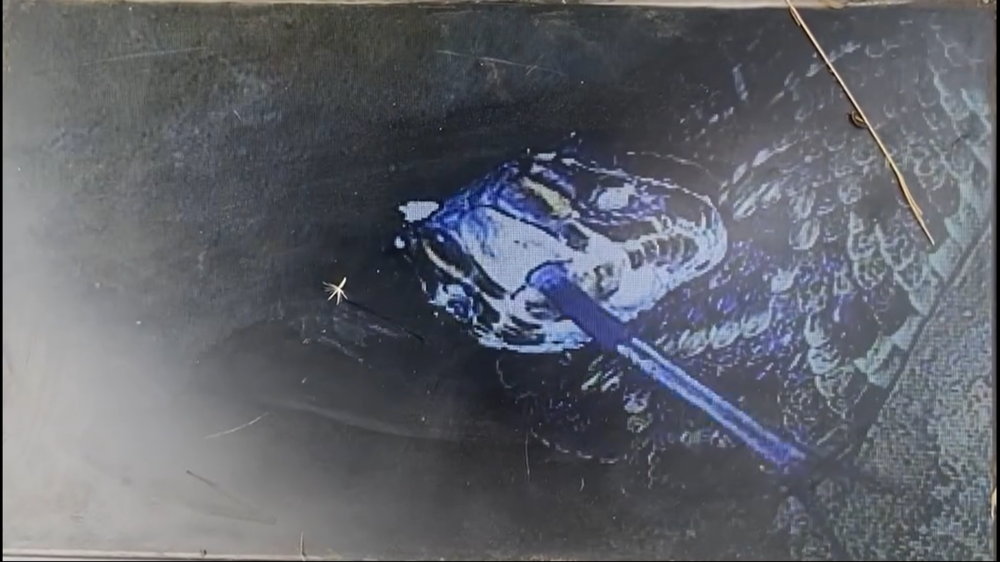
Caption
A routine turtle survey in rural Georgia went in a surprising direction when researchers sent a camera into a burrow and found a rattlesnake staring back at them.
Credit: Facebook video screengrab

A routine turtle survey in rural Georgia went in a surprising direction when researchers sent a camera into a burrow and found a rattlesnake staring back at them.
A routine field survey in rural Georgia went in an odd direction when researchers sent a spy camera into a tortoise burrow and met a rattlesnake.
It didn’t bite the camera, choosing instead to stare into the lens and flick its forked tongue back and forth.
“When we encounter snakes in the burrows with our scope, they are quite curious about what the scope is so they will often approach it to investigate,” the University of Georgia Coastal Ecology Lab wrote in a Nov. 21 Facebook post.
“Here, you can see this individual giving the scope lazy tongue flicks. Snakes use their tongue to collect scent and bring it back to the sensory organs in the roof of their mouths to help interpret their surroundings.”
The encounter did not come as a complete surprise. The researchers spotted the eastern diamondback slithering around, and sent in the scope to see if a perturbed tortoise might be backed into a corner of the burrow.
“In this instance, a tortoise was present in the burrow,” the team said.
Details of how the roommates were getting along weren’t released, but the researchers noted the snake was “at the back” of the burrow.
Rattlesnakes and tortoises don’t necessarily like each other. But the snakes are one of more than “350 commensal species” known to utilize tortoise burrows to survive, making the turtles a “keystone species,” the lab said. Among the interdependent species are opossums, raccoons, rabbits and coyotes, research shows.
The size of the snake was not revealed, but it appeared to be an adult of approximately 4 feet. Eastern diamondbacks are heavy-bodied and known to reach about 6.5 feet in length, making them “the largest venomous snake in North America,” according to georgiawildlife.com.
This story comes to GPB through a reporting partnership with The Telegraph.